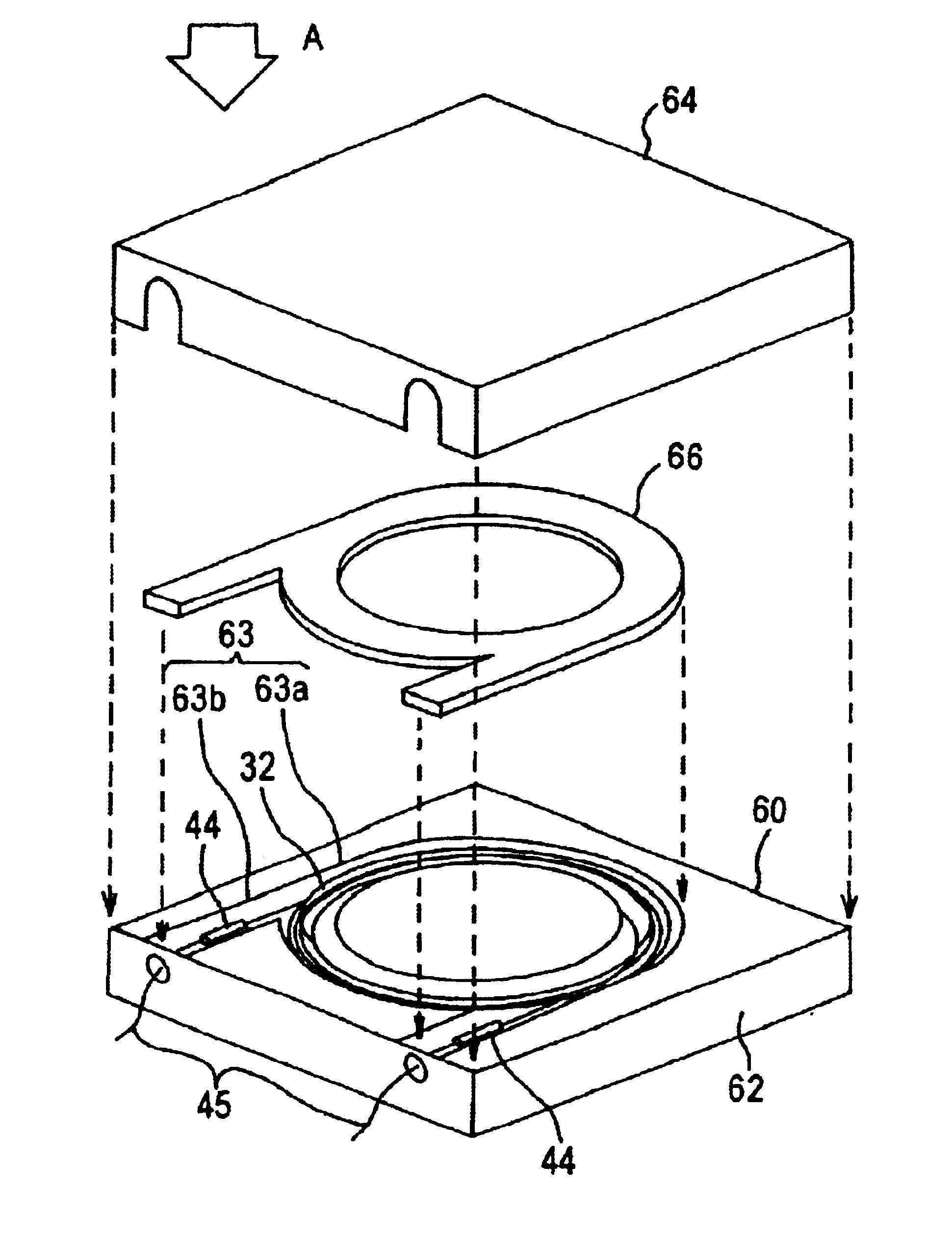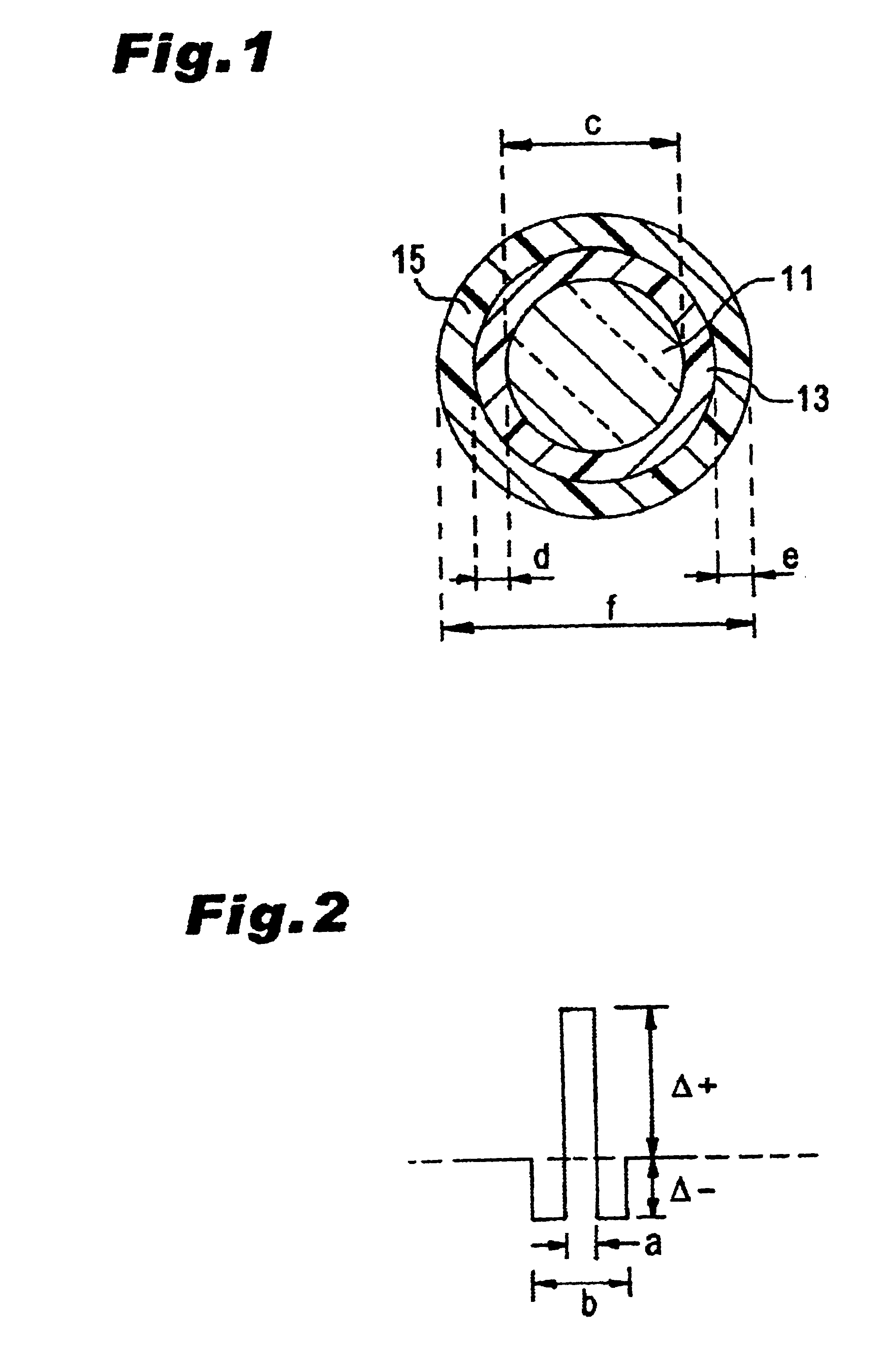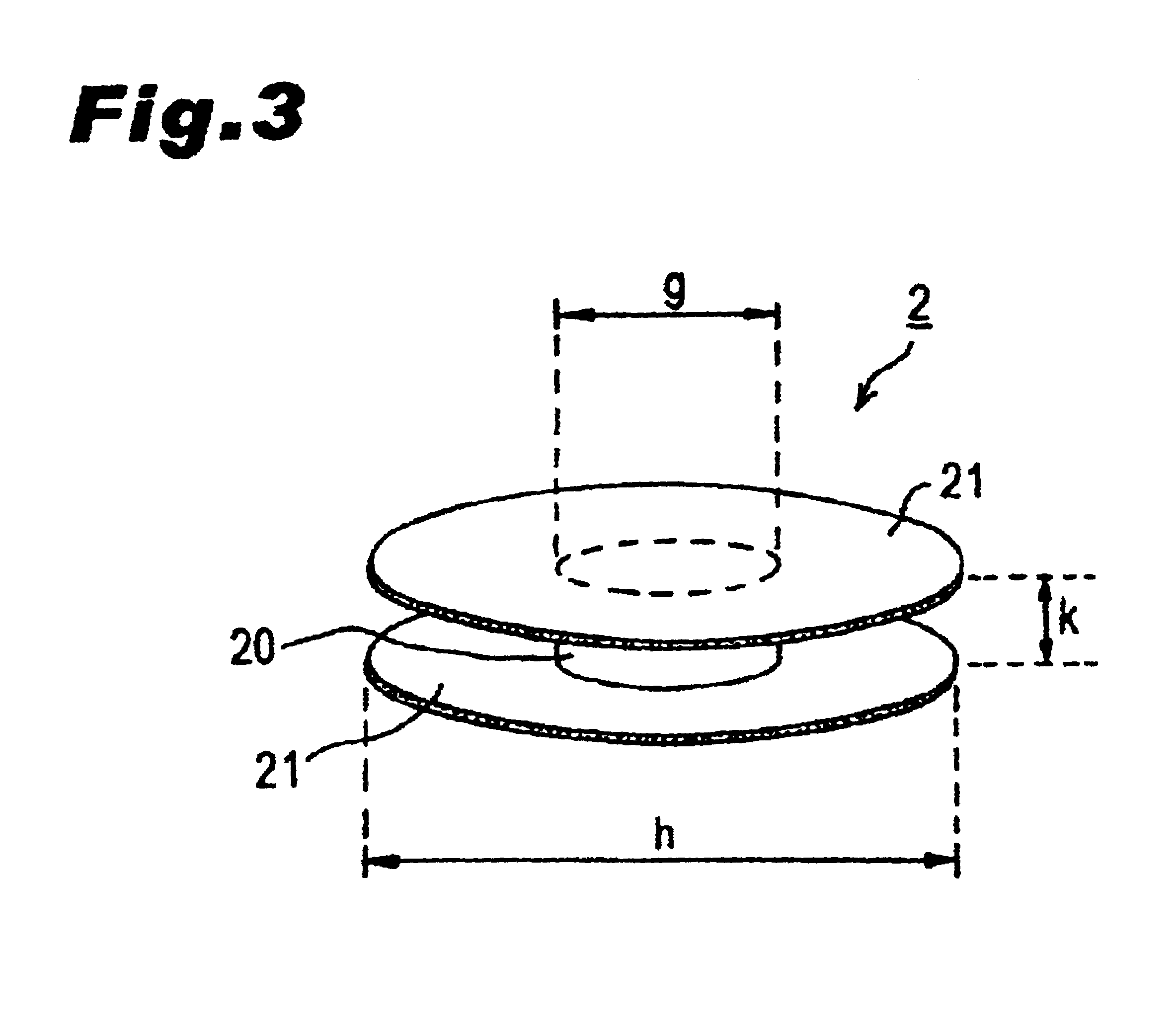Optical device and a making method thereof
a technology of optical devices and making methods, applied in the direction of glass optical fibres, cladded optical fibres, instruments, etc., can solve the problems of increasing the diameter of coils, increasing the size of dispersion compensators accordingly, and achieving large bending losses, reducing bending losses, and large transmission losses
- Summary
- Abstract
- Description
- Claims
- Application Information
AI Technical Summary
Benefits of technology
Problems solved by technology
Method used
Image
Examples
example a
[0154]Around a bobbin 2 made of aluminum in which g=120 mm and k=45 mm, about 90 plies of a DCF having a length of 9 km, the form shown in FIG. 1, and the refractive index profile shown in FIG. 2 were wound with a winding pitch of 0.28 mm at each of two kinds of take-up tensions of 50 gf and 70 gf, whereby two kinds of dispersion compensators were produced. This DCF has the specific characteristics shown in the following Table.
[0155]
CharacteristicsValuesΔ+ 2.5%Δ−−0.5%a2.54 μmb7.26 μmc 100 μmd 20 μme 20 μmf 180 μmYoung's modulus of primary0.06 kgf / mm2coating layer 13Young's modulus of secondary65 kgf / mm2coating layer 15
[0156]FIG. 25 is a graph plotting thus obtained two kinds of dispersion compensators in terms of take-up tension and transmission loss value at a wavelength of 1.55 μm which are indicated by the abscissa and the ordinate, respectively. The broken line indicates the transmission loss value (0.53 dB / km) of the DCF at a wavelength of 1.55 μm in the state wound around a ...
example b
[0157]Around a bobbin 2 made of aluminum in which g=60 mm and k=45 mm, about 190 plies of a DCF, identical to that of Example A, having a length of 13 km were wound with a winding pitch of 0.28 mm at each of three kinds of take-up tensions of 20 gf, 25 gf, and 50 gf, whereby three kinds of dispersion compensators were produced.
[0158]FIG. 26 is a graph plotting thus obtained three kinds of dispersion compensators in terms of take-up tension and transmission loss value at a wavelength of 1.55 μm which are indicated by the abscissa and the ordinate, respectively. The broken line is a transmission loss value shown for comparison as with FIG. 25. The transmission value was 2.54 dB / km and 1.05 dB / km when the take-up tension was 50 gf and 25 gf, respectively, thereby becoming smaller as the take-up tension was lower. At the take-up tension of 20 gf, however, the transmission loss value increased to 2.95 dB / km. It is assumed to be because the take-up tension was so low that the winding of t...
example c
[0159]Around a bobbin 2 made of aluminum in which g=100 mm and k=18 mm, about 210 plies of a DCF having a length of 8 km and the characteristics shown in the following Table (see FIGS. 1 and 2 for its form and refractive index profile, respectively) were wound with a winding pitch of 0.40 mm at each of four kinds of take-up tensions of 20 gf, 30 gf, 40 gf, and 50 gf, whereby four kinds of dispersion compensators were produced. This DCF has the specific characteristics shown in the following Table.
[0160]
CharacteristicsValueΔ+ 2.1%Δ− −0.35%a2.65 μmb7.58 μmc 110 μmd 20 μme 15 μmf 180 μmYoung's modulus of0.03 kgf / mm2primary coating layer 13Young's modulus of 100 kgf / mm2secondary coating layer15
[0161]FIG. 27 is a graph plotting thus obtained four kinds of dispersion compensators in terms of take-up tension and transmission loss value at a wavelength of 1.55 μm which are indicated by the abscissa and the ordinate, respectively. The broken line also indicates take-up tension and transmis...
PUM
 Login to View More
Login to View More Abstract
Description
Claims
Application Information
 Login to View More
Login to View More - R&D
- Intellectual Property
- Life Sciences
- Materials
- Tech Scout
- Unparalleled Data Quality
- Higher Quality Content
- 60% Fewer Hallucinations
Browse by: Latest US Patents, China's latest patents, Technical Efficacy Thesaurus, Application Domain, Technology Topic, Popular Technical Reports.
© 2025 PatSnap. All rights reserved.Legal|Privacy policy|Modern Slavery Act Transparency Statement|Sitemap|About US| Contact US: help@patsnap.com



